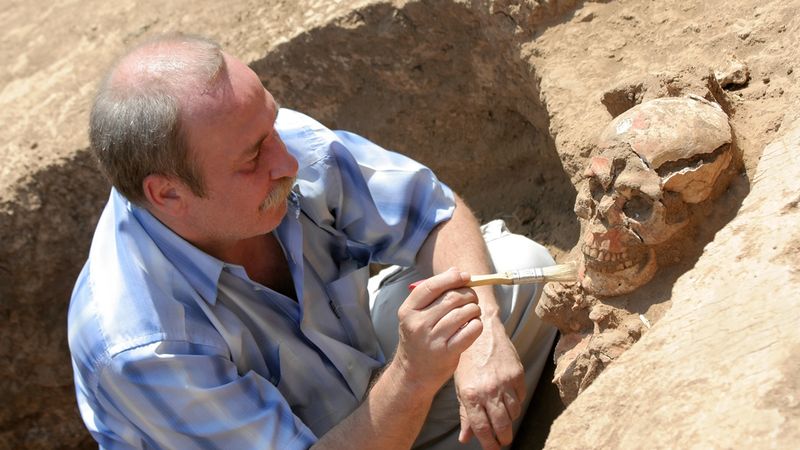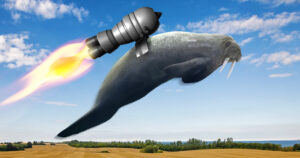Just when it seemed like science couldn’t possibly get any cooler, some group of geniuses goes ahead and discovers something incredible. This team of archaeologists gave us yet another reason to fucking love science when they made the ultimate discovery at a dig site in Tanzania’s Olduvai Gorge—their own fossilized remains!
Duke University professor Paul Silver, the lead researcher on the expedition, claimed that his team was “surprised and excited” when they first uncovered 16 human skeletons all wearing the same exact clothing and carrying the same exact items as they were.
“I looked at the skeleton, and I knew immediately that it was me. It was wearing the same clothes as I was, the wallet in the skeleton’s jeans had my driver’s license in it, and it was even clutching a photograph of my wife and daughter, whom I love very much. This has been scientifically confirmed. That skeleton is definitely me.”
According to a carbon dating test, the skeletons all date back 10,000 years, to the late Stone Age, and the photograph of Professor Silver’s wife and daughter dates back even further—nearly 16,000 years!
Other members of the research team say that this dig has been one of the crowning achievements of their scientific careers.
“This was such an incredible dig for us,” said Silver’s research assistant, Sean Rayburn. “We found a clay pot dating back to the early Bronze Age, a fragment of an ancient figurine made out of lapis lazuli, our own skeletons buried deep beneath the earth, and a cuneiform tablet that shed some incredible insight on the primitive economic systems of early civilizations. This is a dig I’ll remember for the rest of my life.”
Other members of the scientific community have taken notice of this amazing find.
“For a team of researchers to discover their own fossilized skeletons fully intact is a truly rare and paradigm-shifting discovery,” said Dr. George Murrin, professor of archaeology at Harvard University. “This is the kind of breakthrough that ranks alongside the discovery of a new civilization or a link in the evolutionary chain between ape and man. We can learn a great deal by studying the skeletons of Professor Silver and his team, and we owe all of the researchers a debt of gratitude for digging them out of the ground.”
Professor Silver will be publishing his findings in an academic paper titled “In The Presence Of The Past: How The Discovery Of Bronze Age Religious Iconography And My Own Fossilized Skeleton In Olduvai Gorge Alter Our Understanding Of Early Man.” Silver’s skeleton, as well as those of his research team, will be placed on display at the American Museum of Natural History in New York.





